Traditional Filipino Weaving Techniques Can Be Learned Online
Numerous online resources offer tutorials on traditional Filipino weaving techniques, including pinilian and Yakan weaving. These resources cover techniques such as material preparation, using abaca or pandan, and vital tools like backstrap looms.
Online platforms and YouTube channels provide detailed tutorials and virtual classes, offering structured learning and guidance from experienced instructors. These resources cover intricate processes like ikat, which involves understanding warp and weft manipulation.
Mastering traditional Filipino weaving techniques requires practice and patience. Online resources emphasize the importance of understanding warp and weft manipulation and finishing techniques, such as securing the edges of a woven fabric.
By learning traditional Filipino weaving techniques, individuals can create unique and authentic products that can be sold online, promoting economic empowerment. This craft offers a wealth of opportunities for those interested in exploring its nuances.
Online Weaving Resources
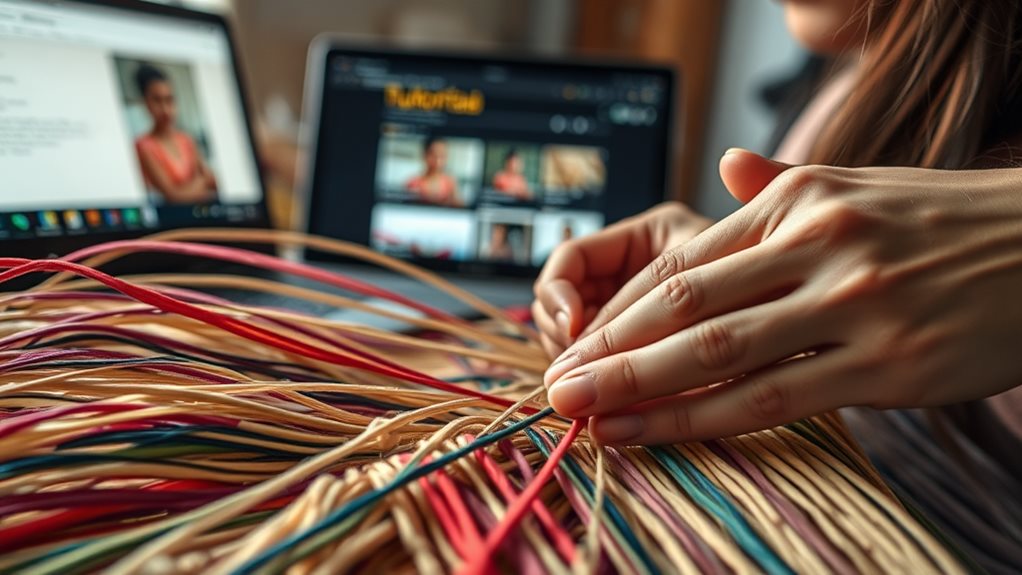
Traditional Filipino Weaving Techniques are Accessible Online
The internet provides access to numerous online resources dedicated to traditional Filipino weaving techniques. These resources offer detailed accounts of distinct weaving communities and their unique approaches. For example, you can explore the Ilocano *pinilian* and *binakul* techniques using cotton or *kapas*, and contrast them with the intricate Yakan designs from Basilan, which employ abaca and pineapple fibers.
Variety of Traditional Materials and Fibers****
Detailed information on traditional materials and fibers is readily available online. The extraction of piña fibers from pineapple leaves in the Visayas, the widespread use of abaca in Bicol and Mindanao, and the prevalence of cotton in Ilocos and Cordillera regions are well-documented.
You can also find information on the various tools employed in traditional Filipino weaving.
Regional Distribution of Weaving Tools and Techniques
The functions of the *pinsel*, *lambitin*, and *tubod* are essential to the weaving process. Back-strap and pedal looms have contrasting uses, with regional distribution varying across the country. For instance, back-strap looms are commonly used in some regions, while pedal looms are more prevalent in others.
Cultural Significance of Filipino Weaving Traditions
Exploring online resources allows you to delve into the cultural significance woven into each textile. The generational transmission of Yakan weaving, its deep-rooted connection to their heritage, and the spiritual aspects inherent in Ifugao practices are well-documented.
You can analyze the storytelling embedded within *dagmay* designs and the symbolic meanings woven into natural dyes.
Virtual Weaving Classes
Virtual Weaving Classes Offer Hands-on Learning Experiences****
Numerous virtual weaving classes provide hands-on learning experiences, going beyond readily available online resources showcasing traditional Filipino weaving techniques. For instance, the Philippine Textile Research Institute (PTRI) and the University of the Philippines Diliman (UPD) host workshops focusing on indigenous textiles such as *binakol*.
These classes cover basic handloom weaving techniques, including pattern analysis and demonstrations, as well as training on virtual loom technology like the Thread Controller 2 (TC2). Participants engage in community involvement projects, collaborating with local weavers to revive and preserve traditional textiles.
Course Content and Structure
The course content includes an overview of indigenous weaving and its cultural significance****.
Detailed pattern analysis of plain weaves and traditional patterns, such as *binakol*, are also covered. Hands-on demonstrations of basic techniques are provided, and participants engage in project-based learning, creating weaving samples using digital looms.
Preservation and Propagation of Traditional Techniques
The primary outcome of these virtual weaving classes is the preservation and propagation of traditional Filipino weaving techniques.
Participants gain hands-on experience and skills in traditional and digital weaving methods, contributing to community engagement and the revival of traditional textiles. The workshops emphasize the cultural and historical significance of Filipino textiles and are part of broader research projects documenting and analyzing these traditions.
Finding Online Instructors
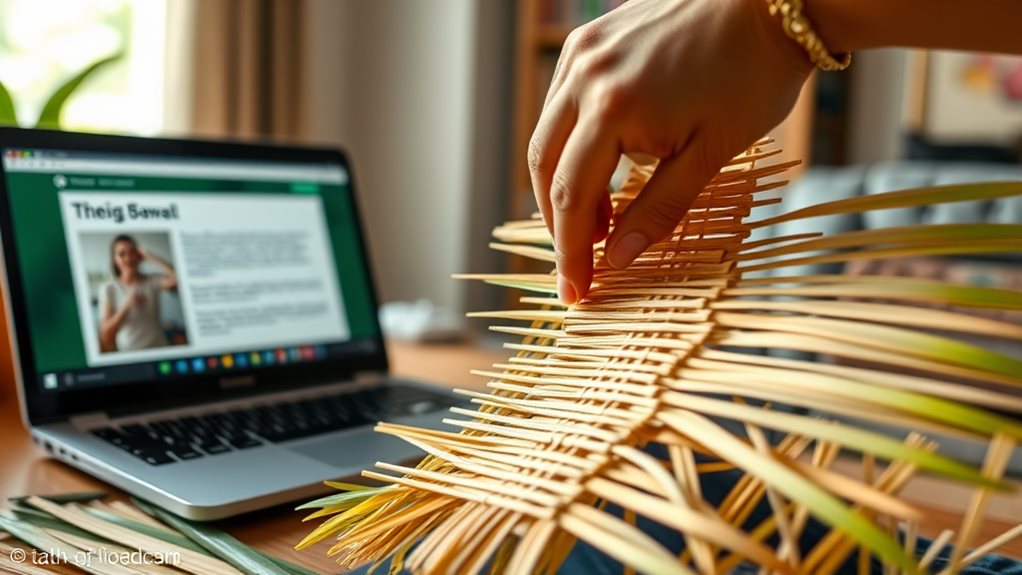
Finding online instructors who specialize in traditional Filipino weaving requires research and consideration of several factors.
One effective way to find online instructors is to leverage online platforms and communities, such as Kalingafornia Laga, which offers intensive lessons and weekly sessions, including demonstrations and weaving practices. These platforms often provide free participation opportunities, allowing you to gauge the instructor's teaching style and expertise.
For instance, Kalingafornia Laga's apprenticeships, such as the one between Jenny Bawer Young and Holly Calica, can provide valuable online instructor recommendations.
When choosing an instructor, consider the following key factors:
- Instructors with proven experience in traditional Filipino weaving techniques are ideal. Look for those with documented apprenticeships or established teaching histories.
- Active involvement in cultural preservation efforts and community engagement within the Filipino weaving tradition ensures authenticity and cultural sensitivity.
- A curriculum that aligns with your learning goals is essential. Determine whether the instructor's curriculum focuses on mastering a specific technique, understanding the cultural context, or both.
- A strong online presence is crucial. Evaluate the instructor's student reviews, testimonials, and the clarity of their online teaching materials and communication.
Researching and selecting the right online instructor is essential for a successful learning journey. Look for programs connected to cultural preservation organizations, such as UCLA's Ifugao Heritage Galleries, or artist-led initiatives showcasing traditional weaving.
To ensure a high-quality learning experience, verify the instructor's credentials and teaching experience before enrolling in any online course. Additionally, consider online instructor recommendations from others experienced in Filipino weaving.
Best Online Courses
Traditional Filipino Weaving Courses are Limited Online****
Finding online courses specifically dedicated to traditional Filipino weaving techniques is challenging. Currently, there are no readily available options that focus exclusively on these techniques and their cultural significance. General textile courses may cover weaving, but they usually lack the specificity needed to master Filipino styles.
Alternative Avenues for Learning
Courses on Domestika, such as those on tapestry weaving or braiding, offer related techniques that can be adapted to Filipino weaving. These courses provide instruction on essential skills, including:
- Basic weaving techniques: Domestika courses teach fundamental weaving skills that can be applied to Filipino styles.
- Braiding and knotting: These techniques are used in various Filipino weaving traditions and can be learned through alternative courses.
While these courses build a foundation, they don't directly teach traditional Filipino techniques or their cultural significance.
Supplementing Learning
To supplement learning, consider:
- Online guides and kits: Self-study materials can provide additional instruction and practice exercises.
- Online communities: Joining online forums or groups dedicated to Filipino weaving can connect you with experienced practitioners and provide valuable insights.
Mastering Traditional Filipino Weaving
To fully master traditional Filipino weaving, a combination of resources and self-directed learning is necessary. This may involve:
- Combining online courses: Using alternative courses to build foundational skills and supplementing with self-study materials.
- Future online course creation: The development of dedicated online courses focused on traditional Filipino weaving techniques and their cultural significance.
Video Tutorials on YouTube
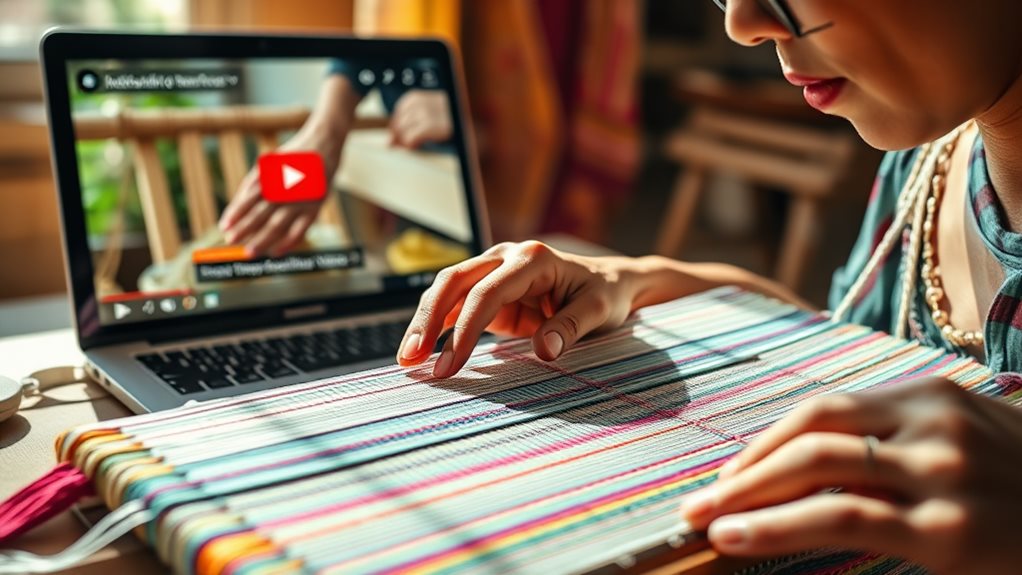
YouTube offers extensive video tutorials on traditional Filipino weaving, serving as a valuable resource for aspiring weavers. These tutorials cover various techniques, including abaca, pandan, and mat weaving. Each tutorial explores the weaving history and cultural significance embedded within the craft.
Materials preparation is a crucial step in Filipino weaving. Tutorials detail the meticulous preparation of materials, such as sourcing abaca fibers or selecting pandan leaves. This process involves sourcing high-quality materials, cleaning, and processing them for weaving.
The weaving process is meticulously detailed in these tutorials, showcasing the use of traditional handlooms and techniques passed down through generations. Step-by-step instructions emphasize precision and accuracy, allowing viewers to learn various weaving techniques.
Tutorials also discuss the cultural significance and history of each weaving tradition. Viewers can learn about the importance of preserving these crafts, their cultural significance, and economic impact. By watching these tutorials, viewers acquire practical skills and gain a deeper appreciation for the rich cultural heritage behind Filipino weaving.
Key topics covered in these tutorials include:
- Materials preparation: Sourcing, cleaning, and processing materials for weaving.
- Step-by-step instructions: Detailed guides for various weaving techniques.
- Cultural significance: Discussions on the history and importance of each weaving tradition.
- Finished products: Examples of completed projects and their applications in Filipino culture.
Blogs and Weaving Articles
Numerous blogs and articles offer thorough explorations of traditional Filipino weaving, providing detailed information on techniques, communities, and cultural significance.
The techniques include ikat, piña weaving, and abaca cloth production, with extensive guides detailing their intricacies. These resources often trace the weaving history, explaining the evolution of tools like the back-strap and pedal looms, from the simple *tubod* to the more complex *lambitin*.
Regional variations are a key aspect of Filipino weaving, with distinct styles found among the Ilocanos, Bicolanos, and the diverse communities of Mindanao and the Visayas. Blogs and articles often highlight the cultural significance of weaving, explaining the symbolic meanings embedded in designs and the spiritual context in many indigenous communities.
Natural dyes and motifs reflect local traditions and beliefs, passing down knowledge intertwined with stories and ancestral practices.
The historical context of weaving in the Philippines is also explored, with many articles referencing archeological evidence that supports the long and rich history of the craft.
The connection between weaving and community identity is profound, with efforts underway to preserve this valuable cultural heritage for future generations. Detailed descriptions of tools like the *pinsel* further enrich understanding of the craft.
Online Communities & Forums

Online platforms provide a space for dynamic interactions and knowledge exchange about traditional Filipino weaving**. These communities facilitate resource collaboration, allowing individuals to access tutorials**, patterns, and valuable artisan connections. By participating in online forums, individuals contribute to the preservation of this craft, ensuring its continued existence.
Online resources for traditional Filipino weaving are readily available. Dedicated online spaces for knowledge sharing can be found on platforms such as Reddit and Facebook groups. These groups offer a space for individuals to share knowledge and resources, participate in technique discussions, and learn from others.
Visual inspiration and connections with a global network of weavers can be found on Instagram and Pinterest. These platforms provide a space for weavers to showcase their work, share techniques, and connect with others who share similar interests.
Twitter facilitates discussions on the cultural importance of traditional Filipino weaving. This platform allows individuals to engage in conversations about the significance of this craft and its impact on culture and society.
Online workshops and classes provide structured learning opportunities, led by experienced instructors and master weavers. These workshops offer a space for individuals to learn specific techniques, ask questions, and receive feedback from experienced weavers.
By participating in these online communities, individuals can access a wealth of information and connect with others who share their passion for traditional Filipino weaving.
This collaborative effort enriches individual weaving practices and strengthens the global community dedicated to this ancient art.
Digital Pattern Libraries
Digital Pattern Libraries Preserve Traditional Filipino Weaving****
Traditional Filipino weaving patterns are being preserved and promoted through the creation of digital pattern libraries. One such example is the CordiTex project, which is digitizing Cordillera weaving patterns for cultural sustainability. Dr. Michelle Stephens' work on translating woven samples from CordiTex and Museo Kordilyera archives demonstrates the significance of this effort.
Digitization Process
Digitizing traditional weaving patterns involves more than just scanning. It requires developing a detailed digital rationale and methodology to preserve the intricate designs. This includes creating a Learning Tool Kit with digital tools for teaching and learning weave drafting, such as a weave drafting app, QR code links to online videos, and a small sample loom for apprentice weavers.
Digital Tools for Weaving
Computer-controlled looms, such as digital jacquard weaving, allow for the precise reproduction of digitized patterns. Finite state machines can also be used to generate unique patterns. Additionally, the TC2 Digital Loom provides another avenue for translating and producing fabrics based on traditional designs.
Cultural Sustainability
Digital pattern libraries contribute to cultural sustainability by empowering weavers to participate in the translation process and ensuring authenticity. The Learning Tool Kit addresses the diminishing knowledge among younger generations by offering a modern, accessible learning method that supports the continuation of oral craft traditions.
Online access encourages wider participation, and the digital libraries' global reach fosters cultural exchange and preservation.
Sourcing Materials Online
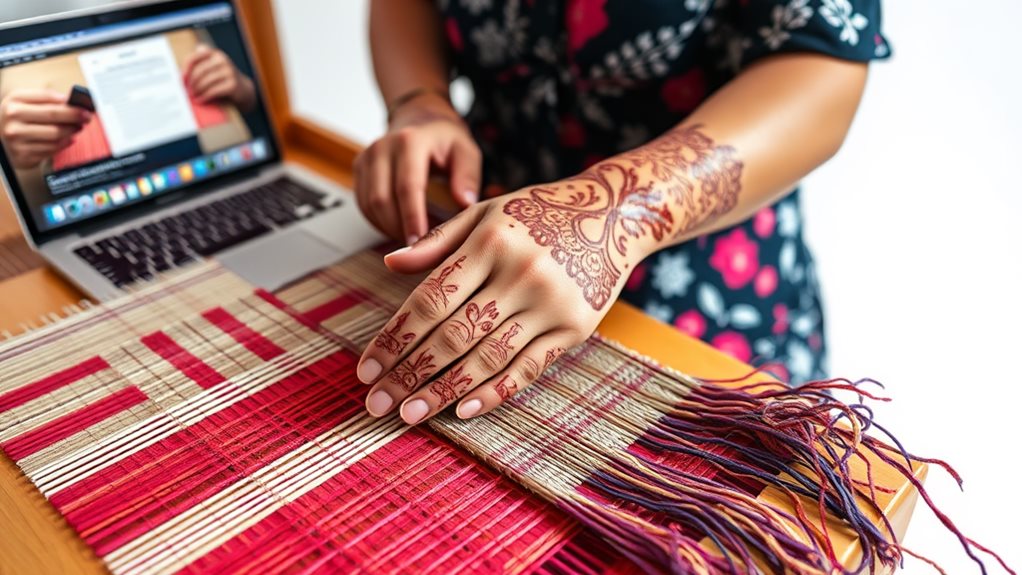
Sourcing Materials Online for Traditional Filipino Weaving****
The rise of e-commerce platforms has transformed the way weavers source raw materials for traditional Filipino weaving, enabling them to connect with diverse suppliers across the country and beyond.
Locating High-Quality Materials****
To create authentic textiles, high-quality fibers and dyes are essential. Online marketplaces offer a wide selection of these materials, supporting sustainable sourcing and local artisans.
1. Local Cotton****
Locally sourced cotton is ideal for creating Inabel**, a textile known for its intricate patterns and natural dyes. Online marketplaces offer a range of colors, from classic indigo to vibrant yellows**, reflecting the rich heritage of Ilocano weaving.
Classic indigo and vibrant yellows are popular color options.
2. Abaca Fibers****
Durable abaca fibers are readily available online, a staple in Bicol and Mindanao weaving traditions. These fibers are known for their strength and versatility, enabling weavers to create strong and long-lasting textiles like T'nalak.
Information on preparation and use is easily accessible online.
3. Pineapple Fibers (Piña)
High-quality pineapple fibers are available online for creating luxurious piña textiles and jusi. These fine fibers require careful processing, and online resources provide information on the extensive process.
Online tutorials and guides are available for processing pineapple fibers.
4. Natural Dyes and Materials
Natural dyes are essential for maintaining traditional methods, and online retailers offer a selection of sustainable and ethically sourced options.
These dyes allow weavers to imbue their textiles with symbolic meanings inherent in traditional Filipino weaving.
Balancing convenience with preservation of traditional methods is crucial.
Setting Up Your Workspace
Setting Up a Productive Workspace****
A well-organized workspace is essential for efficient weaving. Prioritize loom placement by positioning it at a stable and comfortable height for ideal workspace ergonomics****. Ensure the loom is on a level surface to prevent it from tipping over.
Adequate lighting is vital for clear visibility of threads and patterns. Use a combination of natural and artificial lighting sources to achieve optimal visibility. Natural light from a window can be supplemented with a desk lamp or overhead lighting.
A clean, flat work surface is fundamental for yarn preparation. Designate a specific area for yarn preparation and keep it free from clutter. This area should be large enough to accommodate the yarn, threads, and any other materials needed for the weaving project.
Efficient storage is crucial for keeping tools and materials within easy reach. Implement a storage system that includes labeled containers and spools or reels. This will prevent tangles and guarantee smooth thread management.
Yarn Organization
Careful yarn organization is critical for a smooth weaving process. Implement a color-coding system for different yarns and fibers. For example, use red labels for cotton yarns and blue labels for wool yarns.
Maintaining a Dry Environment****
A dry environment is essential for preventing fiber damage. Maintain a humidity level between 40-60% in the workspace to prevent moisture buildup. This can be achieved by using a dehumidifier or ensuring good ventilation in the workspace.
Workspace Ergonomics
Workspace ergonomics is critical for maintaining good posture and minimizing strain during prolonged weaving sessions. Position the loom and chair at a comfortable height to prevent straining the back or neck.
Take regular breaks to stretch and move around the workspace.
Essential Tools & Equipment
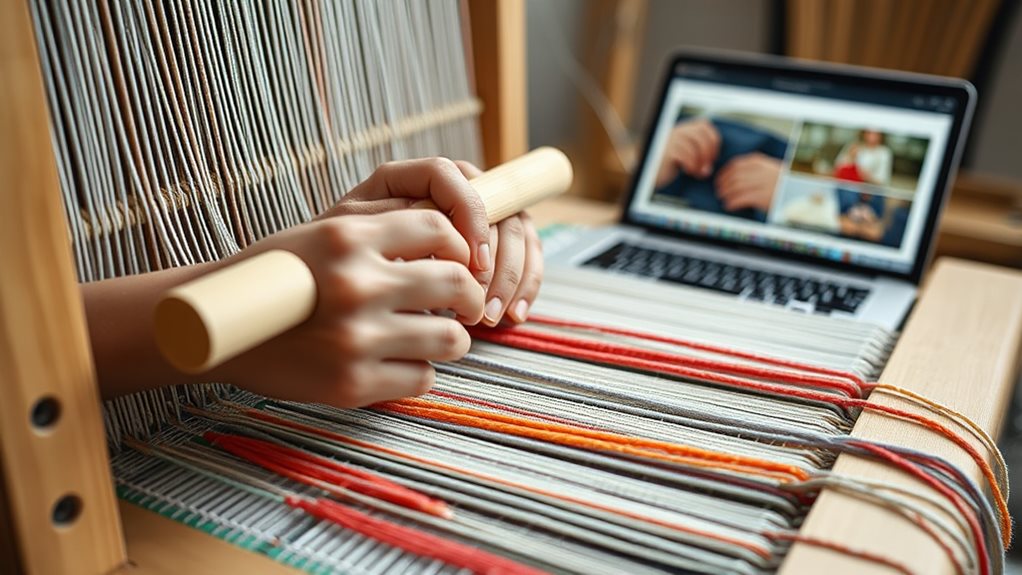
Traditional Filipino weaving relies on specialized tools and equipment to create intricate textiles. A well-assembled weaving toolkit is essential for efficient and effective weaving.
A loom is the primary tool in traditional Filipino weaving**. There are two main types of looms: backstrap and pedal looms. The choice between these two types depends on the preferred weaving style and regional tradition. The loom's components, including the warp beam, heddles, shuttle, reed, and beater, work together to manipulate the warp and weft threads**.
Additional tools are necessary for successful weaving. These include the *pinsel* (beater) for compacting weft threads, the *lambitin* (reel) for managing warp threads, and the *tubod* (warping frame) for preparing warp threads. A spindle is necessary for spinning fibers into threads, and a weaving hook guides the warp yarn correctly.
Regular equipment maintenance preserves tools and ensures a smooth weaving process. This involves consistent cleaning and occasional repairs. Investing in high-quality materials minimizes future maintenance issues.
Four primary equipment considerations are crucial for traditional Filipino weaving:
- The type of loom used determines the weaving style and regional tradition. A backstrap or pedal loom is chosen based on these factors.
- A warping frame (*Tubod*) prepares organized warp threads. This frame is essential for efficient weaving.
- A beater (*Pinsel*) compacts weft yarns, affecting fabric density and strength. This tool plays a crucial role in the final textile's quality.
- A shuttle carries and inserts weft threads across the warp. This tool is necessary for creating the fabric's pattern and design.
Proper care and maintenance extend the life of weaving equipment. Even small components contribute greatly to the overall weaving process, impacting the final textile's quality.
Mastering Basic Techniques
Mastering traditional Filipino weaving techniques requires a deep understanding of the relationship between tools, materials, and regional styles. Each technique holds immense cultural significance, reflecting generations of artistry and knowledge passed down through time.
To begin, learn the basics of warp and weft manipulation, and practice creating simple plain weaves. The plain weave is the foundation of more complex patterns.
The Ikat weaving technique is another essential skill to master. This technique involves resist-dyeing to create vibrant designs, as practiced by Mindanao's T'boli for generations.
Ikat weaving is then built upon with Pinilian weaving, which is characterized by precise warp thread selection for intricate brocades, a hallmark of Ilocano artistry.
Understanding the tapestry weave, an ancient Yakan tradition, enhances appreciation for its ornamented textiles. This traditional weaving style features intricate designs and patterns, reflecting the unique cultural heritage of the Yakan people.
Further develop skills with back-strap loom weaving, a versatile technique used by many groups to produce fabrics like the dagmay. This technique allows weavers to create a variety of fabrics using different fibers and patterns.
Mastering brocade weaving, a Cordillera specialty, requires precision in using supplementary weft threads to create detailed motifs. The key to brocade weaving is the precise use of supplementary weft threads to create intricate designs.
Experiment with various fibers, including abaca for strength, piña for luxuriousness, and cotton for durability.
Explore regional specializations, such as the Ilocos' Inabel, the Visayas' piña textiles, and the diverse traditions of Mindanao. Each region has its unique weaving style, reflecting the cultural heritage and traditions of its people.
Common Weaving Mistakes
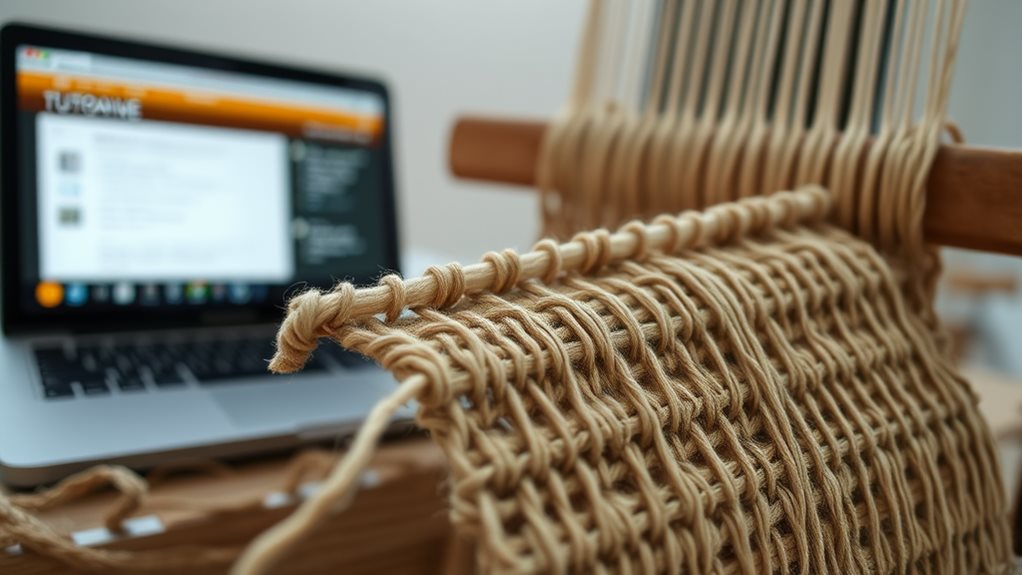
Traditional Filipino weaving is prone to common mistakes, even among experienced weavers. These errors typically arise from inconsistent warp tension, resulting in warp streaks or fabric defects due to excessive tightness. Weft irregularities and poor loom settings also contribute to these problems.
Common mistakes in weaving often stem from minor oversights. Key issues include:
- Inconsistent warp tension, which affects the overall fabric structure, leading to distortions and an unprofessional finish. Maintaining consistent tension throughout the weaving process is crucial.
- Weft irregularities, such as inconsistent density, broken picks, or color variations, which can be avoided by using high-quality yarn and ensuring smooth shuttle movement.
- Inadequate preparation, including insufficient pattern planning, can create problems that are difficult to rectify mid-project. Thorough planning before commencing weaving is essential.
- Poor finishing techniques, such as incorrect finishing methods, can undo the hours spent on weaving. Mastering these techniques is crucial for producing high-quality woven pieces.
To minimize fabric defects and produce high-quality woven pieces, careful attention to detail**** is fundamental throughout the entire process, from preparation to finishing.
This includes addressing yarn quality, loom settings, and careful dye selection.
Showcasing Your Creations
Showcasing Your Creations Effectively
Producing high-quality woven pieces requires attention to detail and effective methods of showcasing your work. To showcase your creations to a wider audience, leverage online platforms like Instagram and Facebook. Use relevant hashtags to boost visibility and create a website or blog with high-resolution photographs. These photographs should showcase intricate patterns and textures using natural lighting and 360-degree views.
Digital storytelling is essential in showcasing your creations. Craft compelling narratives**** highlighting the cultural significance of each piece. Include details on weaving techniques, materials, and historical context. Share the stories behind each creation, explaining the symbolic meanings of patterns and colors. For example, describe the significance of the "t'nalak" fabric, a traditional Filipino textile, and its intricate patterns.
Engage your online community actively by hosting live sessions demonstrating techniques and answering questions. Share behind-the-scenes glimpses of your process and collaborate with other artisans to cross-promote your work. This will help build a supportive network and foster connections with your audience.
Weaving Business Opportunities
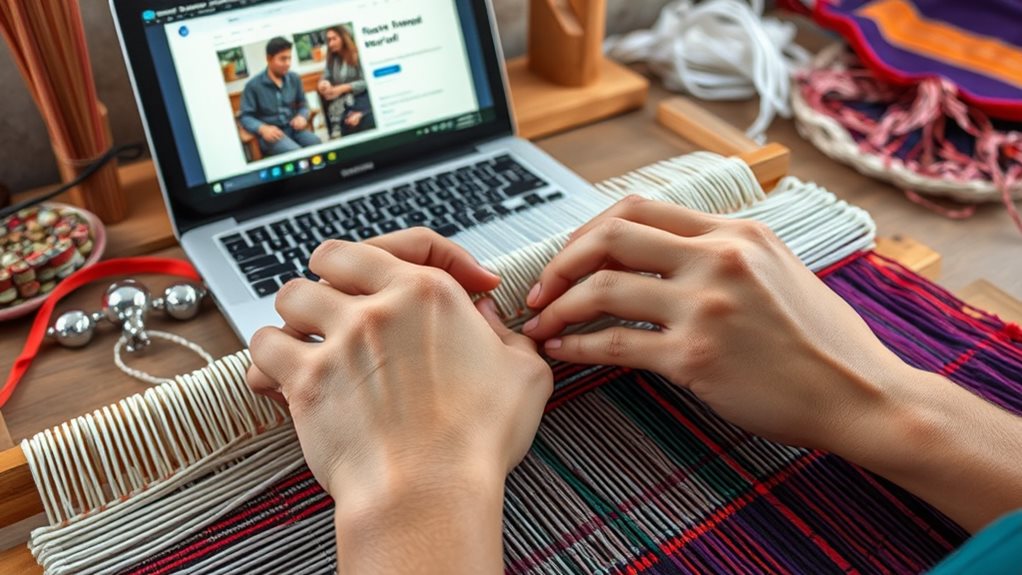
Weaving traditional Filipino textiles can be a profitable business, fostering economic empowerment and cultural preservation. To establish a sustainable enterprise, understanding market demands and utilizing innovative sales strategies**** are crucial.
Key business opportunities in traditional Filipino weaving include:
- Reaching a global customer base through e-commerce platforms. Online platforms allow weavers to bypass geographical limitations and showcase unique pieces to a wider audience, increasing sales potential considerably. For example, a weaver can create an online store on platforms like Etsy or Shopify to reach customers worldwide.
- Forming strategic partnerships with local businesses. Collaborating with cafes or boutiques can expand a brand's visibility and access new customer segments. This cross-promotion strategy enhances both brand awareness and sales. For instance, a weaver can partner with a local cafe to display their products and offer workshops.
- Engaging the local community in traditional weaving techniques. Involving the community in the business fosters cultural preservation while creating employment opportunities. Weavers can teach traditional techniques through workshops or classes, promoting cultural heritage and generating income.
- Offering diversified product lines. Creating a variety of products cater to varied preferences, attracting a wider customer base and boosting profit margins. For example, a weaver can create contemporary designs using traditional techniques, such as modern clothing or home decor items.
Questions and Answers
Can I Learn Advanced Techniques Online?
You can learn advanced techniques online. Various online tutorials provide access to advanced techniques, including detailed instructions and patterns for different weaving styles. These resources cover complex methods, such as tapestry weaving or backstrap weaving, and offer step-by-step guides to help you master these techniques.
Are Online Courses Culturally Sensitive?
Online courses are now being designed with cultural sensitivity in mind. Many courses prioritize cultural sensitivity by avoiding appropriation and promoting community engagement. This approach ensures that the representation of artisans and their work is authentic. For example, courses on traditional crafts often involve collaborations with local artisans, allowing students to learn about the cultural context and significance of the craft. By doing so, courses promote respect for the artisans and their work, as well as a deeper understanding of the cultural significance behind the craft.
How Much Does Online Learning Cost?
Pricing for online courses varies widely. While some platforms offer affordable options, others may have unspecified costs. For example, the Weaving PH Textiles Kit is a budget-friendly choice, priced at ₱2,650.00, which includes online guides to support learning.
What Fiber Is Best for Beginners?
Cotton and abaca are the best fibers for beginners. These fibers are ideal for those new to weaving due to their ease of use and manageable properties.
Cotton is a popular choice for beginners because it is soft and easy to work with. This fiber type is also relatively inexpensive and widely available, making it a great option for those just starting out with weaving.
Abaca is another strong contender for beginners. It is readily available and easy to work with, making it an excellent choice for those looking to practice their weaving skills without too much difficulty.
Which Online Platform Is Best?
Your ideal online platform depends on your preferences and goals. Structured learning is best achieved on PASACAT, which offers a systematic approach to weaving. For market access, Woven is the preferred platform, as it connects weavers with potential buyers and provides opportunities for sales. If cultural immersion is your priority, consider Kalingafornia Laga, which allows you to engage with and learn from other weavers who share similar cultural backgrounds.